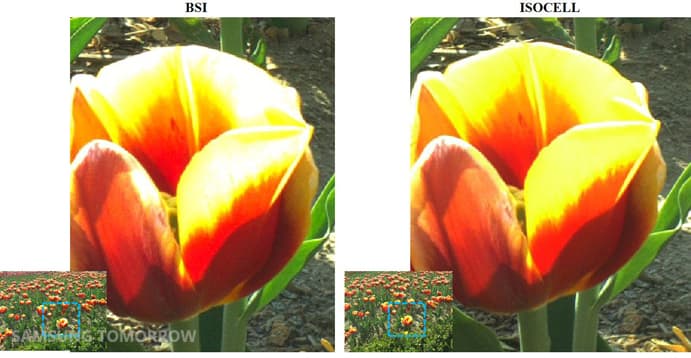Samsung ISOCELL Camera Sensors To Be On Galaxy S5 Smartphone In 2014
Back in September, Samsung Electronics announced the launch of a new advanced pixel technology for CMOS image sensors called ISOCELL. The Samsung ISOCELL sensors technology is able to attain higher color fidelity even in poor lighting conditions resulting in high image quality. And now, SamMobile has reported that the Samsung Galaxy S5 will be launched in 2014 with the 16-megapixel ISOCELL sensor on its camera's features list. At the Samsung Analyst event, Samsung also discussed smartphone displays that have 560 PPI with the 2560×1440 resolution, that should come out in 2014, and even 4k displays (3840×2160) for 2015. A lot can not be said at the moment about Samsung Galaxy S5's features just yet, but with Samsung ISOCELL sensors making their debut, we have a lot to expect.
Speaking a little about the ISOCELL technology - With the market pressure growing by the day to increas camera resolution and image quality, without growing the camera size, the pixels have had to shrink, while improving their performance at the same time. To meet this challenge, previous sensor technology developments focused on improving the light absorption of each pixel, and have progressed pixel technology from FSI (Front Side Illumination) to BSI (Back Side Illumination) which places photodiode at the top to maximize photoelectric efficiency.

According to #-Link-Snipped-#, the ISOCELL technology forms a physical barrier between neighboring pixels – isolating the pixel. This isolation enables more photons to be collected from the micro-lens and absorbed into the correct pixel’s photodiode minimizing undesired electrical crosstalk between pixels and allowing expanded full well capacity (FWC). Compared to conventional BSI pixels, the ISOCELL pixels decrease the crosstalk by approximately 30 percent which results in higher color fidelity to reproduce the original color with sharpness and richness, and increase the full well capacity (FWC) by 30 percent which leads to greater dynamic range.
Moreover, by making the imager designed with ISOCELL feature a 20 percent wider chief ray angle (CRA), folks over at Samsung have been able to reduce the height of the camera module. Thus, the ISOCELL sensors become suitable for slim and small form factor mobile devices too. We can't wait to see what's more on the menu with innovations from the R&D team at Samsung. Would the ISOCELL sensors make the Samsung Galaxy S5 even more appealing?
Speaking a little about the ISOCELL technology - With the market pressure growing by the day to increas camera resolution and image quality, without growing the camera size, the pixels have had to shrink, while improving their performance at the same time. To meet this challenge, previous sensor technology developments focused on improving the light absorption of each pixel, and have progressed pixel technology from FSI (Front Side Illumination) to BSI (Back Side Illumination) which places photodiode at the top to maximize photoelectric efficiency.

According to #-Link-Snipped-#, the ISOCELL technology forms a physical barrier between neighboring pixels – isolating the pixel. This isolation enables more photons to be collected from the micro-lens and absorbed into the correct pixel’s photodiode minimizing undesired electrical crosstalk between pixels and allowing expanded full well capacity (FWC). Compared to conventional BSI pixels, the ISOCELL pixels decrease the crosstalk by approximately 30 percent which results in higher color fidelity to reproduce the original color with sharpness and richness, and increase the full well capacity (FWC) by 30 percent which leads to greater dynamic range.
Moreover, by making the imager designed with ISOCELL feature a 20 percent wider chief ray angle (CRA), folks over at Samsung have been able to reduce the height of the camera module. Thus, the ISOCELL sensors become suitable for slim and small form factor mobile devices too. We can't wait to see what's more on the menu with innovations from the R&D team at Samsung. Would the ISOCELL sensors make the Samsung Galaxy S5 even more appealing?
0
